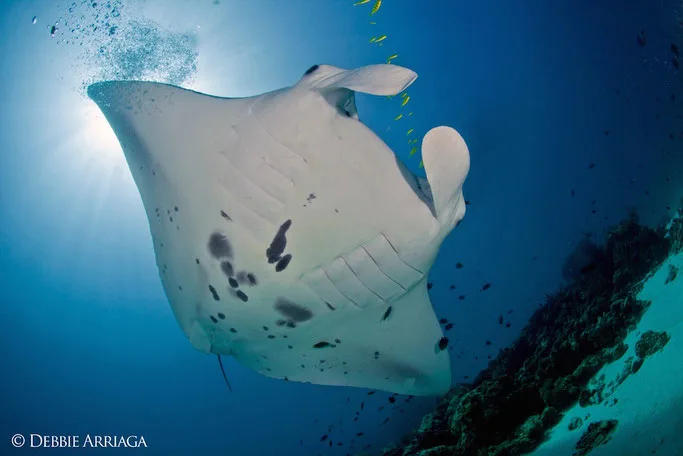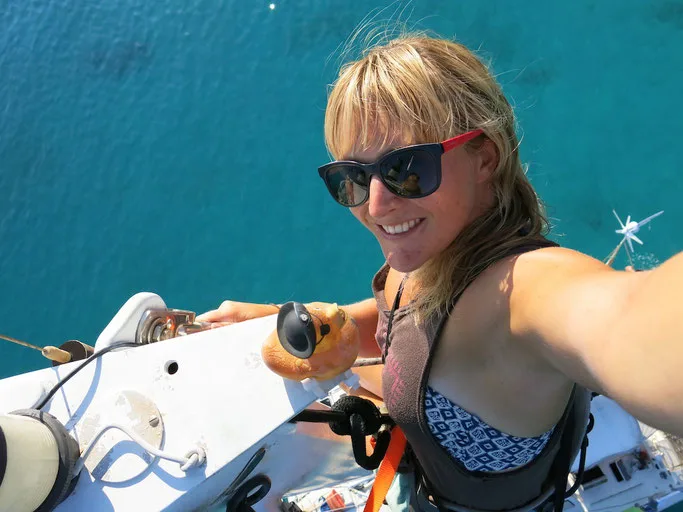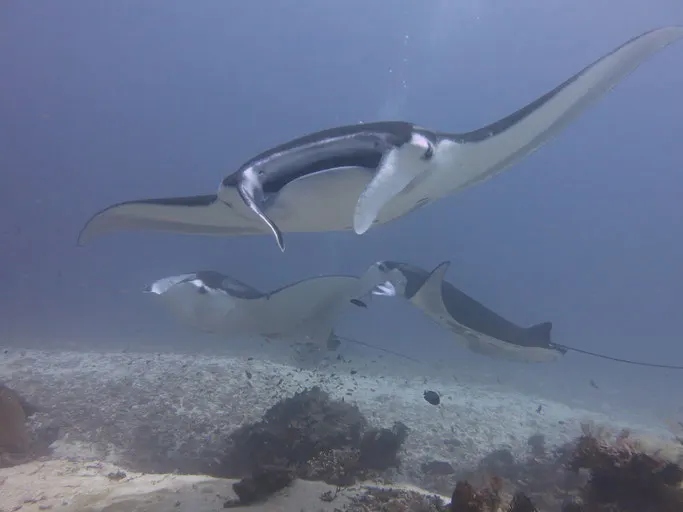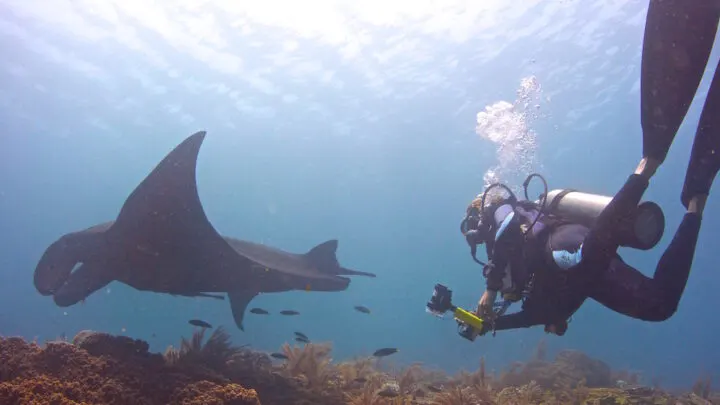Being able to scuba dive with manta rays is on most people’s bucket list, but these interactions are becoming harder to obtain as mantas become vulnerable to extinction. Thankfully, there are scuba stars out there like Steph Venables who is dedicating her life to saving these beautiful animals. We are both proud and honoured to chat to her, and name Steph our latest scuba star!
Where did your love for mantas first come from?
The very first time I encountered a manta ray was when I was 12 years old on a family holiday in Ningaloo Marine Park, Western Australia. I remember snorkelling with them and being in awe of their size and grace. Fast-forward 14 years to 2013 and I got the opportunity to work with mantas in Coral Bay, Western Australia for my postgraduate research. I was looking into the impact of tourism interactions on manta behaviour and spent countless hours in the water with them, but within the first week or so, I was hooked! From that point I knew that I wanted to do everything I could to help us understand and protect these intelligent and beautiful creatures.
What is it that makes manta rays so vulnerable to extinction?
Unfortunately the main threats to manta rays are human induced. They are primarily fished for their branchial filter plates or ‘gill rakers’, which fetch high prices for use in bogus Chinese health tonics. Individuals are also caught as bycatch in everything from large-scale fisheries to shark protection nets, are victims of boat strikes and entanglement in discarded fishing nets and lines.
As a result of these threats, several populations have depleted in size and both species of manta ray are currently listed as ‘Vulnerable to Extinction’. Manta rays are slow growing, long-lived animals that have low natural adult mortality and very low reproductive output – on average females only give birth to a single pup (sometimes twins) every 2 to 5 years. For these reasons they are extremely vulnerable to exploitation, and populations are unlikely to recover naturally once numbers have been depleted.

What led you to the work you are doing in Raja Ampat?
After I finished my postgrad research in Australia, I was lucky enough to be able to pursue my passion for mantas and marine conservation. I scored a volunteer position with the Marine Megafauna Foundation in 2014 and spent 6 months in Mozambique as a manta research assistant. While I was there an opportunity came up to move to Raja Ampat and co-manage the manta research project there and so I took it, of course, and haven’t looked back!
After the first field season I decided to pursue a PhD, incorporating the research in Raja Ampat, Indonesia. I also wanted to expand my skills as a scientist and decided to delve into the wonderful world of conservation genetics – using DNA analysis to provide information on species and populations that can aid in management and conservation.
I started at the University of Western Australia in June 2016 and have a team of ninja supervisors (geneticists, ecologists and manta experts) to guide me. My research is part of a larger collaborative project with two Indonesian universities, so I am definitely kept busy during the field season!
What does your research involve and what is the aim/end goal, if there is one?
Each individual manta ray can be identified by the unique spot pattern on the underside of the animal, like a fingerprint. We use photo identification to record sightings and build a regional catalogue of individuals, which gives us information about the size of a population, demographics, reproductive patterns, site usage, movement etc.
For the genetics side of things we take small skin/muscle samples from the mantas and then extract the DNA. DNA analysis can provide important information on the population such as an estimation of the number of breeding individuals, insight into population structure and connectivity.
I am focussing on both the Mozambique and Raja Ampat populations – one that has suffered severe decline and one that is still healthy. We hope that the results will provide insight into the impact of overfishing on genetic health and the ability of a population to recover from severe decline. Ultimately the end goal is to better understand these beautiful animals so we can protect them. Not just in Raja Ampat, but all over the world.

What is the scuba diving like in Raja Ampat and are manta interactions common?
Diving in Raja Ampat is incredible. It is like no other place on earth – above and below the water. Being located in the heart of the coral triangle, the reefs are breathtakingly beautiful. The coral is diverse and healthy, the fish are abundant and the currents can be challenging at times, but a lot of fun!
Raja Ampat is special in that one of a handful of locations worldwide where you can regularly encounter both species of manta ray – giant and reef mantas. Manta sightings are seasonal, but during November/December to April it is very common to encounter mantas, especially if you are diving at the cleaning stations where they aggregate. We get large feeding aggregations of over 50 individuals as well, which is incredible to see.
How can we get involved and help you in this project?
You can get involved in manta research by uploading any photos of manta bellies that you may have from past or present dive trips, anywhere in the world, to Manta Matcher. Manta Matcher is an online database that allows citizen scientists to contribute to manta ray research all over the world… Check it out!

And finally, what is the best destination you have scuba dived?
Eek, this is a tough one! For tropical diving, Raja Ampat is pretty hard to beat. When you manage to catch certain sites in the right conditions, the amount of life and action on the reef is mind-blowing!
My most memorable dive so far was actually in the Galapagos Islands. I was backpacking with my best friend and we could only afford to do one day of diving. We went to Gordon Rocks off the island of Santa Cruz and it was insane! Hammerheads, giant mantas, Galapagos sharks, sunfish, huge turtles and sea lions that wanted to play with you the whole time! Everywhere we looked there was one amazing creature after another… stunning!

